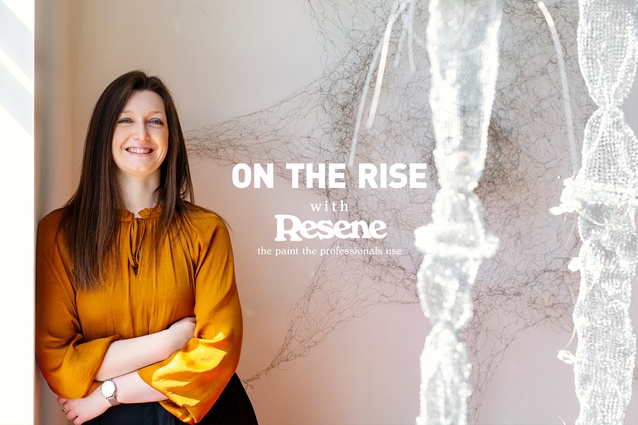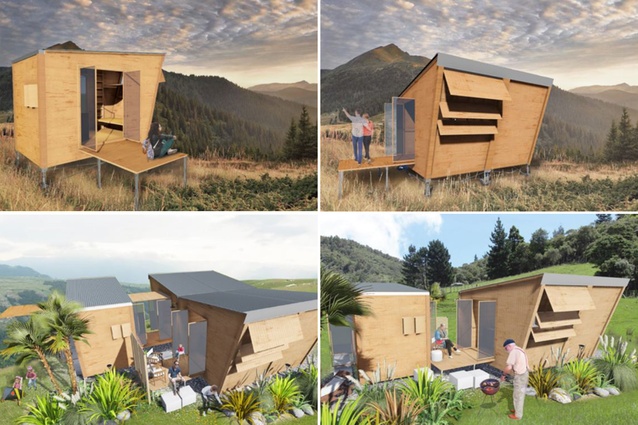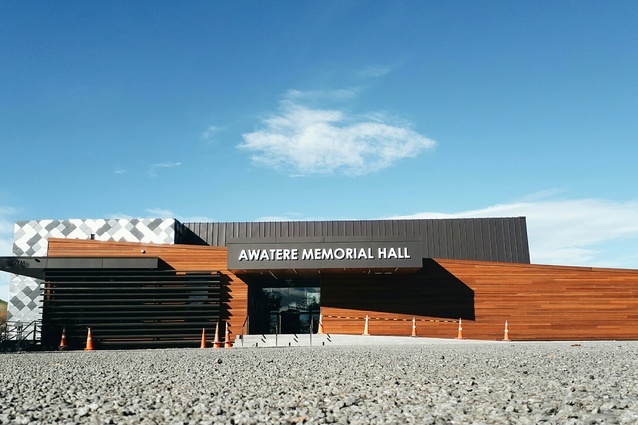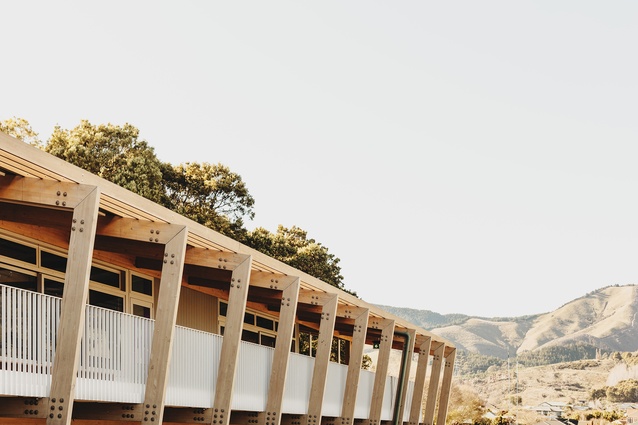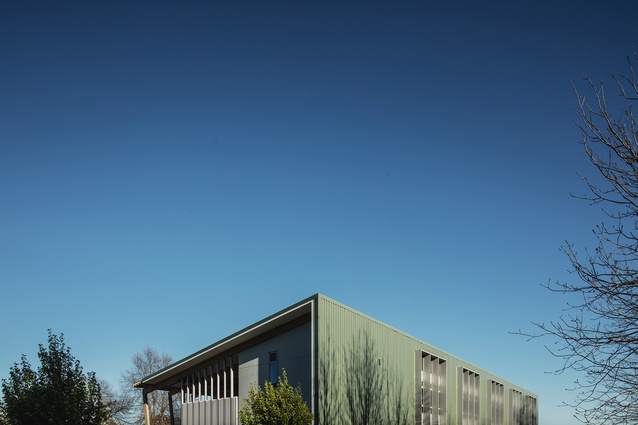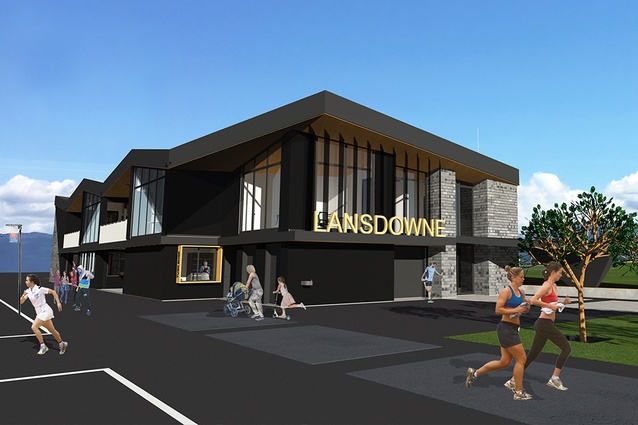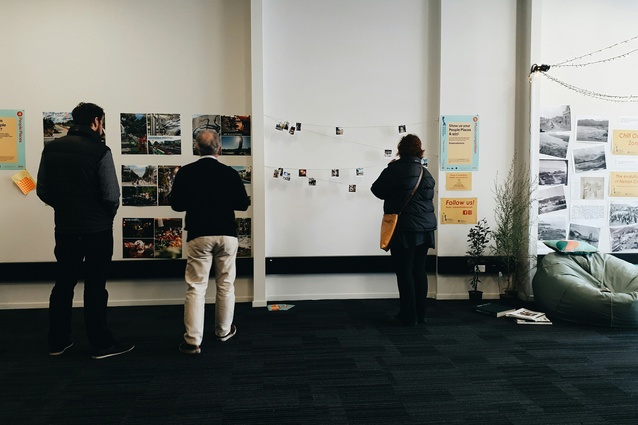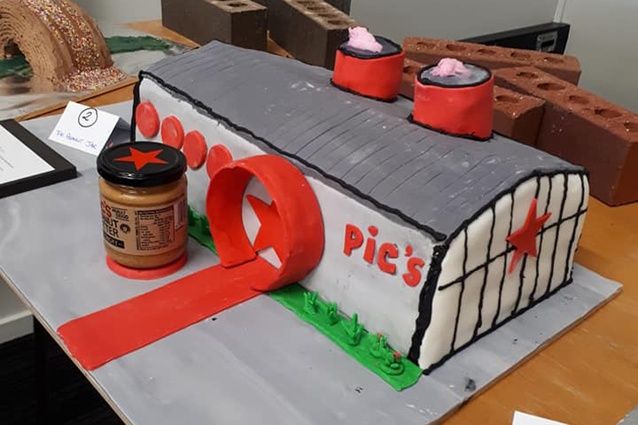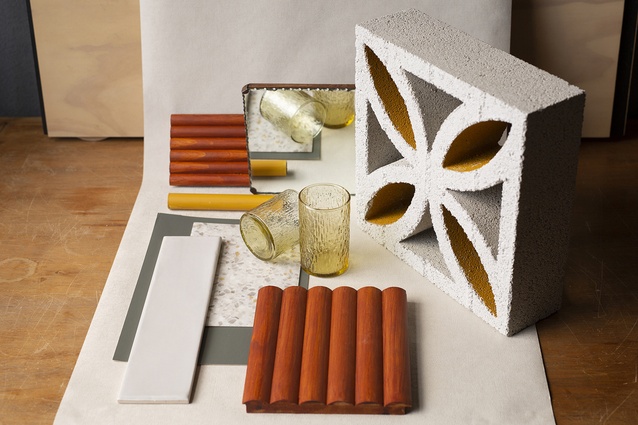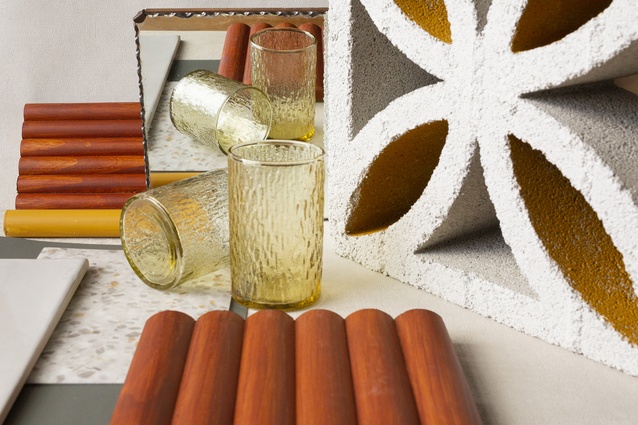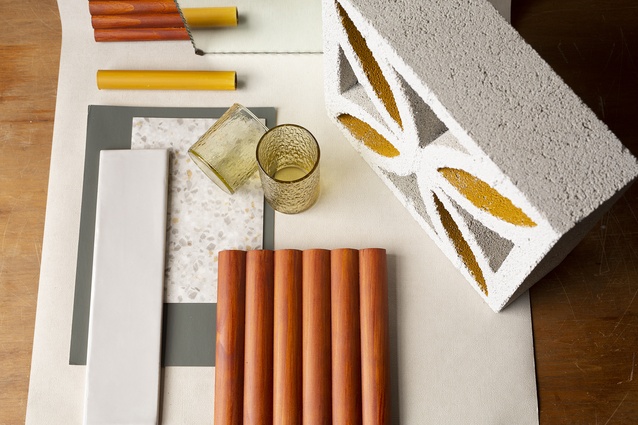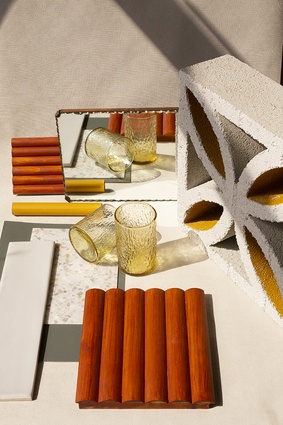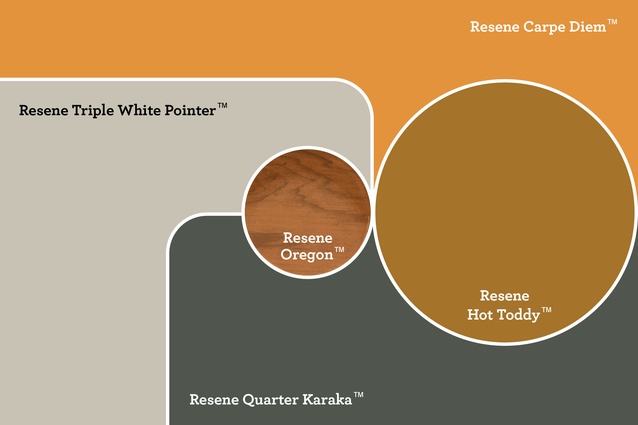On the Rise: Renée Williamson
ArchitectureNow’s On the Rise series with Resene puts young designers around the country in the spotlight. This month, we speak to Renée Williamson, a graduate at Arthouse Architects in Nelson. Renée works with Emerge, the NZIA’s group for graduates and emerging designers, sits on the Institute's board as National Graduate and Emerging Practitioner Director and has coordinated the Festival of Architecture in the Nelson/Marlborough region for the last few years. It is clear that both engagement with the industry and the wider community she lives in are important to her. Here, she shares how her strong links to place and passion for well-designed public space guide her design process, the rise of regional architecture and the importance of community in both.
Ashley Cusick (AC): How did you get involved with architecture, were you always interested in it as a kid?
Renée Williamson (RW): I was lucky and always wanted to be an architect. I don’t really know where that stemmed from but all the back of my school books had house plans drawn in them when I was meant to be doing other work. My mum is an artist and my dad is very artistic. That probably helped with the imagination and creative side of architecture. My grandparents were also always looking at investment properties, so whenever they would babysit me they would drag me to open homes. That may have had an influence when I look back.
AC: Did your philosophies around architecture evolve when you started your formal studies versus when you were growing up?
RW: When I look back at the plans I drew as a kid I was inspired by what I was exposed to, so a lot of spec homes my grandparents dragged me along to. Going to university, my mind opened up to what architecture was really about and the creative side and pushing boundaries and what actually influences a design and how you get to a certain point. I didn’t really have a preference in terms of scales or commercial versus residential. Whatever project we were given I would push it as hard as I could.
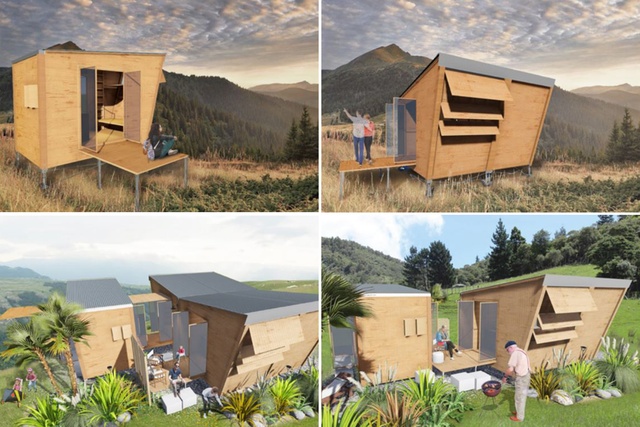
AC: With your thesis, you decided to focus on the smaller scale of housing. Actually, you pushed it to the smallest edge and looked at how tiny a home could get. How did you decide to focus on that for your final year project?
RW: That was more influenced by the condition at the time. I really struggled to come up with a thesis topic; everyone was looking at parametric design and all these really far out topics, and it wasn’t really me. I am more practical. Even though it is great to push boundaries, I am always quite grounded in reality, so finding a project that I could really connect with was important. At the time I was thinking about my own home. I didn’t like the idea of renting for a long time and paying off someone else’s mortgage. I was thinking about how I could get into the housing market myself, and I needed to think outside of the norm.
Why do we need such big houses? Everyone talks about gains and investment and resale value, and I thought, those things can still occur with good design; it is not about size or scale. I started to look at how much space we really need to live. I took it to the minimum, in terms of what is truly required in terms of human necessities. The ten square-metre rule in New Zealand about what you can build without a consent also influenced this scale. Then, I broke down how much space you need to sleep, how much space you need to eat or prepare a meal, how much space you need to bathe. Taking it back to those raw human conditions that are required to live.
I came up with the AdAPTA Home, which is a ten square-metre house that could be expanded and added to as life changed. You might be okay in that space for a short period, but I would say that after a while of living there you would perhaps go a little insane. So, you could expand it, and if your family grew you could add to it. The idea was that when you got older and you didn’t need so much space you could pass a portion of the house on to the next generation for them to start the process again. It was very conceptual, but the idea of refined living and taking things back to what you truly need was the underlying design principle for me, and that informs my designs today.
AC: How do you balance that philosophy of simplicity, or minimalism, with professional practice where there are client briefs and commercial parameters to work within?
RW: It can be quite tricky, especially if the client knows what they want. At the end of the day, they are employing you and paying you to do something. But, we have a professional duty to push them, I believe. Why would you go to an architect if you didn’t want some alternative thinking? Often when budgets get mentioned and they realise what they can actually get for their money – it is either a reduction in size or a reduction in quality. So we always try to push to keep the quality and reduce the size. Maybe you don’t need four bedrooms; maybe you can make do with two or three or make more flexible spaces. It is about getting them to think about how they actually live as opposed to how they think they live. Then, you start to give them little exercises, like to go home and try living just in their lounge and living spaces and kitchen. How does that feel? How many times do you actually use your guest rooms?
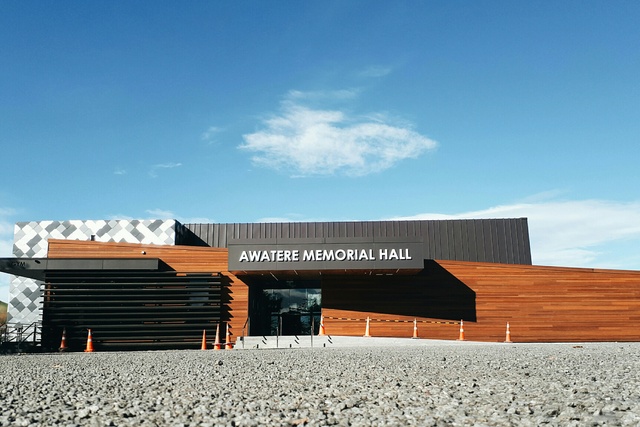
AC: I suppose in a place like Nelson it would be an added challenge because there isn’t as much of a battle for land, and there are often larger sites than you would get in a city like Auckland or Wellington.
RW: Definitely. Wellingtonians will completely understand the concept of infill housing and living in tiny narrow houses that look really cool and are clustered close together. Here, Nelsonians aren’t as open to that, purely for that reason: because there is so much space. We don’t really have any other models to go off. Nelson could do with some infill housing and creative designs and bringing people back into the city. That is definitely at the forefront of designers’ minds here. We have got to get councils and developers on board with that, which can be the trickiest part.
AC: You moved back to Nelson to work with Arthouse Architects after graduating, rather than staying in a larger city like Wellington. What have been some of the big differences you’ve found working in a regional town, compared with what you worked on in uni, or with work for a bigger city?
RW: I think it is more personal in smaller places and regions. Not to say this doesn’t occur in larger cities as well, but in the smaller regions people feel a really strong connection to their place, and they take pride and ownership of what they have. So, everyone has an opinion, which can be quite challenging sometimes, especially in terms of heritage or something that has always been there. Changing a whole community’s mindset can be quite tough, but when they see the outcome or see a proposal, they get quite excited. Something I have found very exciting is the public projects I have been able to work on, just for that engagement and involvement and that challenge with working with communities, especially in the community I live in because everyone knows me. That can add a little more pressure. I work extra hard to try and get things right because I don’t want to disappoint people.
Sometimes I think it might be easier just being that one step removed from a place. But, I am really enjoying seeing local places transform and really opening up a community’s mind to what is possible and how their towns could be better through planning and architecture.
AC: And, what have you been working on since you started with Arthouse Architects?
RW: One project I worked on was in Seddon, which is just south of Blenheim, a tiny town. They had this community hall that held school balls, weddings, funerals; the whole community used this facility, but it had not been used for years and years because of earthquake damage. The community had become quite disconnected. That was a really exciting project, to restore the hall and add new elements, making the architecture so much better than it was. The community took so much pride in it, and we retained a lot of the old materials. On the dawn blessing, the community walked around and they were really emotional; it was really special to witness that. Bringing a community back together through architecture was pretty amazing. In smaller areas that is the most special thing for me, being able to bring a whole place together through a building.
The building, the Awatere Memorial Hall in Seddon, went for quite a long time and involved a lot of tricky detailing. I still remember the moment of actually seeing the physical building, something you had drawn in 2D, come to life. It was such an amazing feeling and something I hope I don’t forget as I move through my career.
There is a big commercial sports hub in Lansdowne Park in Blenheim that has been exciting to work on, it being a total new build on a huge scale. I’m also working on all of the Marlborough district council toilet upgrades. We have been working on this from pretty much since I started at Arthouse, on various toilet projects. Everyone jokes that the new grad gets given the toilets, but I actually really enjoy working on them, again, because of the public engagement. I’ve gotten to work on other cool jobs like Waimea College here in Nelson, which is a brand new eight teacher classroom block. It is two stories and is an all-timber structure. And also a few alterations, which I enjoy because the client gets to see a transformation of what they already had and open their mind to the possibilities of how their existing building can be so much better.
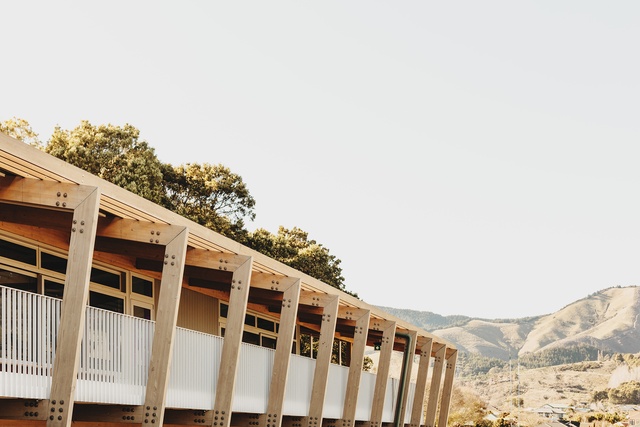
AC: Are there certain areas where you feel people are more inclined to seek out the work of an architect? Or, do you work in different areas across the region?
RW: It is actually varied. I have been quite lucky living in Marlborough and knowing quite a few of the local builders. They have come to me with some standard jobs and said we have this client who wants to remove this wall, can you just draw it up for them? One of them I took and the clients had never worked with an architect before and didn’t know what it involved, but I think they were really excited by the sorts of conversations we were having. I think they got a better result from having an architect involved.
Another one was just new cladding of a house I drew up for a friend who was a builder, and that grew on to become a new deck and a verandah. I really enjoy working for those people as well who don’t have huge budgets, you just work with what you have got to create the best thing you can, and it is rewarding.
AC: You’ve also been coordinating the local NZIA Festival of Architecture for a few years now. How did you get involved with that?
RW: The first year that I came here, another graduate who was working at Arthouse, she was involved in the festival and they were looking for speakers for a local lecture and she volunteered me but she didn’t tell me for weeks and weeks. My name was on all the promotional material, but she hadn’t told me. One day, she said, Renee, I have been meaning to tell you something, I think it would be really great for people to hear about your thesis research about living in smaller spaces. Then she said, so you are speaking this weekend at a lecture. I was surprised at first, but it was an exciting opportunity. It led to the local magazine here, WildTomato, writing an article about some of my research, and that led to a tiny-home job because someone read the article.
Then, I was shoulder tapped by a local NZIA graduate representative here to take her spot. I felt like I needed to be more involved and take the opportunities that I could while I had them. That is the nice thing about being in a smaller town, the opportunities are easier to come by here.
There is an initiative here at the moment called Makeshift Spaces, which takes vacant shops and uses them for local activities, whether it is an artist that wants to display some work or a workshop, they have the Voice Collective, which is a bunch of people that sing at lunchtime in these spaces. So, we hired a Makeshift Space and we ran a little ‘What does Nelson need?’ type event, and printed off maps and the public could stick stickers on them and tell us where their favourite spots were, where they wanted more playgrounds or more connection to the water or anything they wanted. It was really successful, we had lots of people that came in multiple times.
One of the most fun things we’ve done is run a graduate cake competition during last year’s Festival of Architecture. It got about four or five architect entries which were very cool – there was one entry on the Pics Peanut Butter World, which won the people’s choice vote, and one was the Ronchamp Chapel was modelled out of cake. We also had about eight or 10 schoolkids enter, so it was really great to see different generations involved in something fun that was architecture focused.
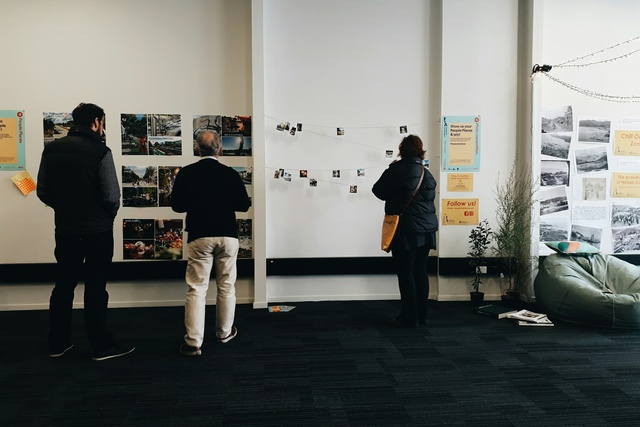
AC: What has it been like working with Emerge and connecting with other graduates and young designers around the country?
RW: I’m the NZIA board representative for all the graduates and emerging practitioners, and I often feel I am gaining more insight than what I am giving. I have learnt so much in terms of governance and important decision making processes at such a high level. It has given me a lot more understanding and appreciation for institutes and what actually goes into making those decisions. It is so easy to sit back and not be a part of that and have a judgement or an opinion on how things should be done, but it is not until you are in that role that you actually understand why things can and can’t happen. My biggest goal – well, challenge – is to really understand the needs of all the graduates and emerging practitioners out there. The Emerge Instagram and social media has really helped to get more engagement and more people’s opinions. We are slowly breaking down the barriers, and people are being more open, which is helpful. We have a national committee so there is a representative in every region, and we meet every month and everyone gives me a report on what has been happening and any issues and concerns. Then, I take those to the board if they are relevant for discussion. It ties everyone together.
AC: Have you seen more engagement amongst the community with architecture since you’ve started in these roles?
RW: When people see results, they are often more open to ideas around it. The more we start to see those projects come and evolve, the more that people become open to that type of project. For example, there is one project happening here at the moment on the Maitai river on an industrial site. In Nelson, we have got this beautiful river and this awesome CBD and no real connection. So it is quite exciting that they are making this site into a little bike pump track and there is going to be a basketball hoop and it will be designed with super bright colours. It is the same in Blenheim. People are all about having a place to park and they can’t imagine walking for five or ten minutes to get where they want to go. So, we start with stepping stones, those seeds that get planted early on that lead to bigger things. The Blenheim river redevelopment is going to connect into a new library, which will then help to connect back to the CBD, and I think then the public are really starting to get it now. It is a long game though to change public perception.
AC: What kind of advice would you give to people wanting to study architecture or design, and particularly to people who are either from regional towns or wanting to work in those areas?
RW: If you have a passion for architecture and design, then definitely go for it. It is challenging and it can be quite hard work. There were plenty of moments I had at university where I said this is so hard, I don’t want to do this for the rest of my life. But I got over those little bumps, and it was so much more rewarding than I imagined in the end. In any industry, you will have moments where it is not that fun or exciting, but if you are truly passionate about something then you will do well.
Also don’t be put off just because you are not the best. At university, just because you are not an A-plus student for every project you are working on does not mean that you won’t be good in the industry. University and the job, in reality, are totally different. University doesn’t always prepare you for the real world of architecture, but then, the real word of architecture can’t teach you what university does. They work really well together, but don’t expect what you learn at university to be what you’ll do for the rest of your life. If you are not the best or not the top of the class it doesn’t mean you won’t have a really successful career. If you have the passion then go for it.
AC: And, you’re currently putting your thesis research to the real-life test with the house you’ve just bought in Marlborough. Tell us about that.
RW: Yes, I bought it in early February and moved in just before the lockdown. It is only 50 square metres. I bought a house in Marlborough mainly because the Nelson housing market was so difficult to get into; houses were really expensive and the housing stock was really uninspiring. Whatever I could afford was either in a bad area or just terrible quality. Being a first-time home buyer, I didn’t have any extra money to spend on renovations, so I bought a tiny, 1960s-era bach in the Marlborough Sounds. I love it. It is perfect for me. I have got lots of ideas of what I want to do but, in terms of the size, it reiterates that we don’t need huge houses to be comfortable. We only have what we need and what we do have, I guess, we have a bit more money to spend on nicer things.
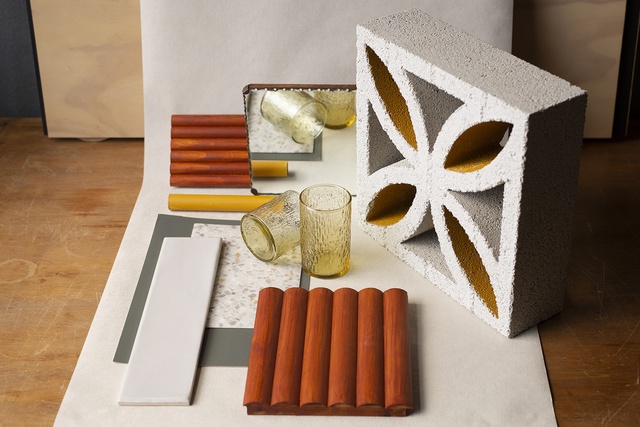
AC: What are you looking forward to in the future? What would you like to see in terms of architecture in the region, and for you personally, in your career?
RW: For me, I will never stop learning. I don’t think you ever get to a point where you think, “I am intelligent now”. It is a constant journey, so I am excited about all the things that I am going to learn and how every project gives you new skills.
For the community, I hope that we keep seeing new projects pop up, and the potential that there is for their cities. Especially for my local area in Marlborough, we have got this beautiful marina and a great main street but no real connection. My goal for my immediate environment is to show the possibilities of connecting the two. I am going to start at the small scale and see what can happen, and that mentality can be translated to everywhere: showing people what is possible and how it can bring so much more benefit than they realise.
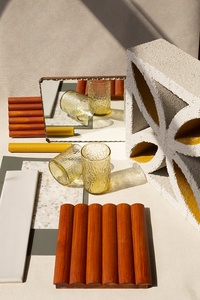
AC: Finally, you created a mood board using Resene products as part of our On the Rise series. Tell us what you created and where your colour inspiration came from.
RW: My mood board is inspired by materials of the 60s and 70s and is about light, shadow, reflection and texture. I drew upon the colour and texture of my favourite glasses to inform the rest of the palette, which also inspires my own home renovations.
I love the way the textured glass reflects light and colour. For smaller spaces, like my own home, using reflections is a great way to make a space feel larger than it is. The timber half rounds are stained with Resene Oregon and will be used for wall paneling and feature joinery, giving shadow and depth to otherwise flat surfaces. Resene Hot Toddy reflects the tones of the glass and provides a bold colour punch. I am a big fan of screen block for providing privacy without completely blocking off, creating a more porous and interesting threshold to public/private space, as well as sunshading. I’ve again used Resene Hot Toddy as a highlight to the gritty concrete. I have also used Resene Quarter Karaka and Resene Triple White Pointer as background colours. The entire mood board sits upon the textured Resene wallpaper 47150, which references the texture of the glasses.
See more from the On the Rise series here.

